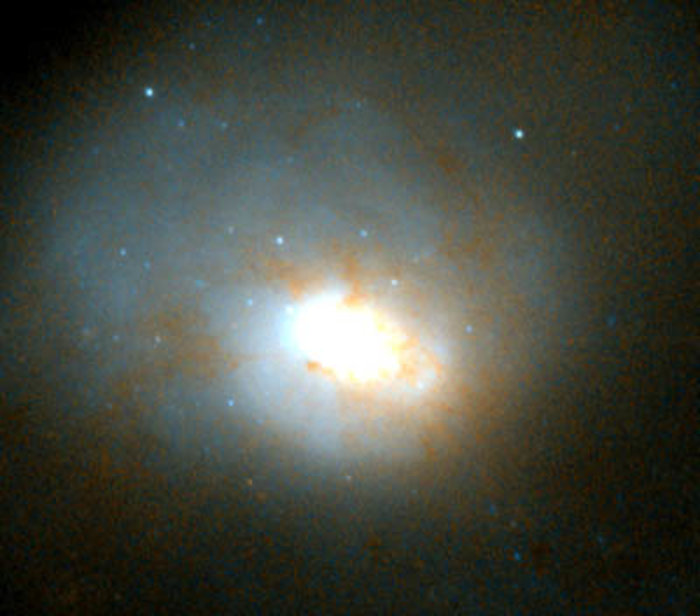Central region of HST image of NGC 3921
In NGC 3921, we have discovered over 100 new young clusters. There are two reasons to believe that all these young clusters formed from GMCs in the merging spiral galaxies. First, in all three galaxies (N4038/39, N7252, N3921) the young clusters show same, characteristic luminosity distribution: For every very luminous cluster, there are 10 times as many clusters that are 3 times fainter, and 100 times as many clusters that are 10 times fainter. This characteristic distribution is very similar to that of GMCs in nearby galaxies, where for every very massive GMC there are 10 GMCs one-third as massive and about 100 GMCs one-tenth as massive. Also, GMCs contain about 100,000 times to about 10 million times as much mass as our sun, a range of masses nearly identical to that of globular star clusters. Second, our observations of the two more advanced merger galaxies with Hubble show that the newly-borne clusters in them have the same spatial distribution as the stars. (Explain violent relaxation, why GMCs would experience same fluctuating gravitational field during the mergers as the stars do, and thus end up with same spatial distribution; etc)
Credit:B. Whitmore (STScI)
About the Image
About the Object
| Name: | IRAS 11484+5521, NGC 3921 |
| Type: | Unspecified : Star : Grouping : Cluster |
| Constellation: | Ursa Major |
| Category: | Galaxies |
Coordinates
| Position (RA): | 11 51 6.71 |
| Position (Dec): | 55° 4' 43.95" |
| Field of view: | 0.48 x 0.42 arcminutes |
| Orientation: | North is 53.5° left of vertical |


